Search Results for Tag: Oil
Arctic Oil – a white elephant?
The conference: Arctic Frontiers has attracted a record number of participants this year and huge media interest. For the first time in addition to a political and a science section, there is also a business section. It will focus on oil, gas and minerals. Clearly, once more, the Arctic is a “hot topic”.
The conference opened with an exceptionally good panel discussion tonight. The conference title is “Climate and Energy”, and it is hardly surprising that there is a lively debate on that here. Norway is, after all, an oil nation, but at the same time a country well known for innovation and wise financial management. And then, of course, comes the urgency of the climate conundrum…
Here in Tromso, Norway’s “Arctic capital”, the question of Arctic oil obviously plays a key role. The representative of the region Line Miriam Sandberg, County administrator for business, culture and health, and the panel chair Olav Orheim, (GRID Arendal, a centre that works with UNEP) made it quite clear that a lot of people here are in favour of Arctic development, including oil and gas exploration, in the interests of jobs and economic benefits.
The representative of the oil industry Kjell Giæver, Director of Petroarctic found himself a bit out on a limb, though. Apart from the Tromso representative, there was no real support for or confidence in Arctic oil development amongst the panelists. Guest of honour HSH Prince Albert II of Monaco, who is quite committed to Arctic protection and has a tradition of Arctic exploration in his family, stressed the need to protect against any dangers to the fragile environment.
The Chair of the US Arctic Research Commission Fran Ulmer called for a carbon tax and measures to protect the climate and reduce fossil fuel consumption. Although she stressed this was her personal opinion and she could not speak for ANY government (!), she is obviously in a very influential position, and anything she says on this has to be taken seriously.
It will come as no surprise that Nina Jensen, CEO of WWF Norway, is against oil exploration in the Arctic. I can remember her here at previous conferences having a much more difficult time, with plenty of opposition from other speakers. This time, my impression was that she was definitely not in a minority.
Probably the most noteworthy stance – certainly the one that impressed me most – was taken by Jens Ulltveit-Moe, the CEO of Umoe, one of the largest, privately owned companies in Norway, active amongst other things in shipping and energy. Here we had an industry representative, who said quite clearly that with the current low oil price Arctic oil was simply not viable, and this would remain the case for many years to come. (The oil industry rep as you can imagine disagreed). And by then, he said, the EU’s climate targets and the international support for a two-degree target would make fossil fuels a non-option. The future lies in renewables, he says, and Arctic oil investment will probably be a white elephant. (His group is involved in bioenergy), Now there is food for thought at the start of this high-profile gathering, which will see high-ranking government representatives from the Arctic nations, but also China and others, discuss “climate and energy”. If the opening debate is anything to go by, the next two days will be very lively.
Arctic Economic Council – and the environment?
I would like to share my thoughts with you on the founding meeting of the Arctic Economic Council, taking place in Canada Sept. 2nd and 3rd. Iqaluit, the capital of the northern Canadian territory of Nunavut, is hosting the inaugural meeting of the, group set up to promote commercial development in the Arctic, as climate change makes the region more accessible. It was in Iqaluit that the first-ever ministerial meeting of the Arctic Council (AC) took place back in 1998. The newly established independent Arctic Economic Council (AEC), with close links to the AC, could prove to be equally influential.
Canada currently holds the rotating presidency of the Arctic Council, an organization linking eight Arctic states and six organizations representing Arctic indigenous peoples. Its self-set tasks include sustainable development, monitoring the Arctic environment, identifying pollution risks and environmental emergency preparedness. But in the race to open the Arctic to increased shipping, oil and gas exploration and mining, the formation of the new Arctic Economic Council (AEC) could see commercial interests gaining the upper hand.
Canada puts business first
Leona Aglukkaq, Canada’s Minister for the Environment, the Canadian Northern Economic Development Agency and the Arctic Council, is presiding over the founding meeting of the AEC. Its creation has been a key project during Canada’s 2013-2015 Arctic Council chairmanship, which Aglukkaq has focused on “development for the people of the North.”
“Our government prioritized the creation of the Arctic Economic Council to facilitate business opportunities, trade, investment and growth in the best interests of Northerners,” said Aglukkaq ahead of the two-day meeting. “Establishing this body is an historic moment for the Arctic Council in its efforts to advance sustainable development in the Arctic. I’m confident that the AEC will be a strong and effective body that will help enhance pan-Arctic economic cooperation for the benefit of communities and people in the Arctic.”
An unwise move for the AC?
But some people believe the AC could be making a mistake by allowing a potentially highly influential business group to grow outside of its own structures. Neil Hamilton, Senior Polar Political Advisor at Greenpeace International, told DW: “By creating an independent organization which answers to no one but has the authority to attend, work within, and manipulate the activities of the Arctic Council and its working Groups, the Arctic Council has severely undermined its own mandate.”
The AEC is being established with the contribution of the Arctic Council, but as an independent body. Representatives of both Councils would meet at regular intervals to discuss the economic development of the Arctic.
Originally, the AEC was envisaged as a circumpolar business forum. It’s since turned into a more formal structure. Each of the member states and each of the council’s indigenous permanent participant organizations was invited to send a maximum of three representatives to the inaugural meeting, where they will discuss the organization, structure and objectives of the AEC. The business representatives attending include CEOs and other high-ranking figures from a range of industries including oil and gas exploration, iron mining, tourism and shipping lines.
In the future, membership will not be limited to these nominations and may accept self-nominations from the Arctic business community.
A back-seat for the environment?
Canada says businesses in the Arctic will play a strong role in building a sustainable and economically vibrant future for the region. This will not reassure environment campaigners who have repeatedly attacked the current Canadian administration for its support of environmentally problematic industries such as oil tar sands or fracking, and for its refusal to back international climate agreements. The participation of the Vice-President of Russia’s Rosneft Oil Company Andrey Shishkin will raise eyebrows among those concerned about the possible environmental impact of oil exploration in the High North.
Finland is seeking to chair the AEC, although the group is to be purely business and not government run. In a press release, the country’s Foreign Ministry mentions environment protection but does not appear to give it priority when it outlines the objectives of the new body:
“In the future, the main focus of its work will be on the enhancement of the economic operating conditions of indigenous peoples and Small and Medium Enterprises (SMEs), the reduction of obstacles to trade, the support for sustainable economic operations, and raising of issues the AEC itself considers topical.”
In an AC paper on “facilitating the creation of the Arctic Economic Council,” environmental protection is only listed the last of six objectives, in connection with “maximizing the potential for Arctic economic activities.”
Conservationists are concerned that protecting the environment could take a back seat while companies pressure for fewer restrictions. With the Arctic warming more than twice as fast as the rest of the world and melting ice easing access to northern regions, the pace of Arctic development could outrun efforts to ensure environment protection and safety measures with increasing shipping and the risk of accidents or oil spills.
The World Wildlife Fund, which originally supported the group, told journalists the way it had been set up was “opaque and unaccountable”. WWF said it hat been refused permission to observe the meeting.
Greenpeace Arctic policy advisor Hamilton told DW: “The founding document of the Arctic Economic Council sets the frame for a new era of exploitation of the Arctic, without any indication of intent to protect the environment.” At the same time the Arctic Council, which was established to protect the environment, was “negating its prime function.”
Hamilton called on the Arctic Council to accord civil society the same privilege as it appears to be allowing the new economic group, by loosening regulations on granting the role of observer status.
The two-day meeting in Iqaluit ends on Wednesday, September 3rd. In the coming months, the Arctic Council will have to clarify its relation to the new AEC it helped create, and demonstrate how it’s going to reconcile the increasing pressure for commercial activity with avoiding environmental damage.
Arctic oil: confrontations ahead?
The first oil from the controversial Prirazlomnaya offshore Arctic oil platform is on its way to Rotterdam. This, you will remember, was the oil rig where the Greenpeace “Arctic 30” were arrested by Russian forces last September during a protest. The Greenpeace ship Rainbow Warrior III is on its way to meet the tanker, the “Mikhail Ulyanov”, and protest against Arctic oil drilling. (The Greenpeace icebreaker Arctic Sunrise remains in the custody of the Russian Investigative committee, over six months after the action and four months since an official amnesty was adopted).
This oil transport marks the first ever shipment of Arctic offshore oil. Interestingly, it has been bought by the French oil concern Total SA. I remember the furore when the chief executive of that very company Christophe de Margerie, ruled out drilling in the Arctic in 2012 out of concern about the effect of a possible spill. Hm. Looks like it’s OK to profit from the oil as long as somebody else takes the risk. Although I seem to remember at the time that worry about the negative impact a spill in the sensitive ecosystems of the remote Arctic would have on the image of the industry as a whole played a role in the decision.
Greenpeace Captain Peter Willcox, a member of the ‘Arctic 30’ who was imprisoned in Russia for over two months after the protest at Gazprom’s Prirazlomnaya platform in the Pechora Sea last year, is at the helm of the Rainbow Warrior III. The organization is not saying much about what form the protest will take as yet. But presumably the risks of a drastic response like last year’s Russian crack-down are minimal in the North Sea. As far as the culture of dealing with protest in the Arctic is concerned however, a recent announcement by President Putin gives little reason for optimism. On April 23rd, the Barents Observer carried a worrying report headlined “Putin arms Arctic drillers” on a meeting between Putin and his top national security aides. It says Putin highlighted the need for an enhanced security presence in Russian Arctic territories to protect oil production facilities, loading terminals and pipelines “against terrorists and other potential threats”.
The same day Putin signed amendments in a federal law on the protection of oil and gas objects and infrastructure. It gives Russian oil companies the right to establish their own protection units. The Barents Observer quotes the newspaper Rossiskaya Gazeta as suggesting the companies might eventually hire “thousands of well-armed people, equipped with automatic weapons, vehicles, vessels and aircraft”, mostly former military personnel, police officers and special forces agents. Even if that proves to be slightly exaggerated: the thought of corporate armed units having the law in their own hands to squash anything that looks like opposition to Arctic development is a nightmare.
“This week’s Arctic speech from the Russian leader has a scope which goes far beyond imagined threats from potential terrorists. It also includes a major element of heightened inter-state tensions”, according to the Barents Observer. Given the current climate against the background of the ongoing Ukraine conflict, I have to share that concern. With the Russian leader stepping up the country’s military presence in the Arctic arguing that there is an “increasing conflict of interest between the Arctic coastal states” and that “the situation in the world is fraught with new risks and challenges to Russian national interests”, it is hard to be optimistic about the prospects for an Arctic future free of confrontation.
Eco-group questions Iceland oil
Back in January, China’s state-owned oil company CNOOC obtained an Arctic exploration licence for the remote Dreki area, 125 miles off the north coast of Iceland. Iceland has very close relations with Beijing. When I interviewed the Foreign Minister Gunnar Bragi Sveinsson at an event in Tromso earlier this year, he told me:
“We have a very good cooperation with China. We hope our Free Trade Agreement will be fully implemented in the summer. China is a very big player in the world economy. They are showing interest in the Arctic, interest in western Europe, and we treat them like anybody else in the world. As long as they play by Icelandic rules, Icelandic law, we don’t worry. I see opportunities in working with China, no threats”.
I was interested to come across a short item by the news agency AFP about a group that sees Arctic development a little differently; the Iceland Nature Conservation Association. Their opposition has nothing to do with the fact that China is investing in the region, but with the basic fossil fuels-climate paradox. The agency quotes the chairman, Arni Finnsson:
“Iceland should not bet on oil at a time when it is doubtful that humanity can reach its (greenhouse gas) goals.”
Apart from the climate implications, Finnsson says oil production in the area envisaged by CNOOC along with Icelandic firm Eykon Energy and Norway’s state-owned Petoro is unlikely to be cost-efficient. The cost factor is one analysts say will play the key role in determining whether offshore oil exploration in the Arctic will be viable, as discussed on various occasions here on the Ice Blog.
Iceland is still recovering from the financial crisis of 2008-2009 and hopes to follow in neighbouring Norway’s footsteps and build a lucrative oil industry. “That is the hope,” Thorarinn Sveinn Arnarson, who heads the hydrocarbon licensing department at Iceland’s national energy authority, told AFP. “If something is found that is economically viable there would be tax benefits and of course all the other things, job creation and technical capacity like we’ve seen in Norway and in the Faroe Islands.”
But experts warn that this vision could be some way off if it ever materialises. Dag Claes, a leading oil and gas expert at the University of Oslo, stresses the remoteness of the area. He also draws attention to the problems of developing a suitable infrastructure for an oil industry in this part of the world, a problem I wrote about here on the Blog recently. You might also like to check out the article: Are we prepared for a catastrophe in the Arctic?
Arctic infrastructure cannot keep pace
The Russian response to Greenpeace’s protest at the Arctic Prirazlomnoye oil rig made it clear to a lot of people that in spite of environmental concerns, the commercialization of the region is proceeding “full speed ahead”and enjoying top political priority. The controversial rig went into production at the end of the last year. Shipping has also increased dramatically in Arctic waters in the last few years, with international freight companies using the Northern Sea Route along the Russian coast to transport gas and other commodities. This reduces the distance between Shanghai and Hamburg by around 6,400 kilometers, compared with the usual route via the Suez Canal. Tourism is also on the up, with an increasing number of cruise ships making their way through Arctic waters during the summer months. What happens if one of these ships sinks? When the Costa Concordia cruise ship hit rocks off the italian island of Giglio in January 2012 and tipped onto its side, the risks of this kind of tourism became graphically clear. The thought of something like that happening with an iceberg in the remote regions around Spitsbergen or Greenland doesn’t bear thinking about. But that, of course, is exactly what we have to do with a view to minimising risks for people and the environment.
The Arctic Institute Center for Circumpolar Security Studies has examined existing infrastructure in the six Arctic coastal states (USA, Canada, Greenland/Denmark, Iceland, Norway and Russia). I attended a workshop as a side-event to the Arctic Frontiers conference in Tromso in January, where the initial results were presented. They should really set the alarm bells ringing.
Kathrin Keil from the IASS Institute for Advanced Sustainability Studies in Potsdam, Germany, looked at developments in the oil and gas sector. She warned that the unpredictability and variability of weather and ice conditions would severely limit the options for responding to an oil accident in the region. The ice cover in May can be between 30 and 90 percent, she explained.
The ice-free period can be as short as one month or as long as nine. To date, there is no adequate technology available to successfully deal with the results of an oil spill in Arctic waters. The Institute also says the ‘Oil Spill Response Plan’ provided by Gazprom for the Prirazlomnoye rig lacks detail. The rig is located close to several nature reserves and Kail warns that these areas would be extremely vulnerable if oil or fuel were to spill. She argues for the tightest possible safety regulations, given that this is the first offshore oil platform to go into operation in the Arctic.
Not enough icebreakers
The existing infrastructure is also inadequate for the increase in Arctic shipping, says Malte Humpert, Executive Director of the Arctic Institute. He says the icebreaker fleet is not big enough to support the growing number of vessels sailing through Arctic regions.
The increase in the number of cruise boats, especially near the Norwegian Spitsbergen archipelago and off the west coast of Greenland, is another cause for concern. If a cruise ship carrying 3,000 people were to collide with an iceberg near the popular tourist town Ilulissat, the existing search and rescue capacity would not be sufficient to cope. The available planes, helicopters and ships would be too few and take too long to reach the accident site, says Arctic Institute’s Marc Jacobsen.
With just 4,500 residents, Ilulissat would be unable to provide adequate medical treatment or shelter for people affected by the crash. Oil and other toxic chemicals dumped by the damaged vessel would be very difficult to clean-up. There is also a shortage of satellite, internet and mobile phone connections, meaning communication would be limited.
Politicians are prepared to take risks
The risks of the increasing commercialization of the Arctic are high on the priority of the region’s politicians, says Magnus Johannesson, Director of the Permanent Secretariat of the Arctic Council . In an interview at his office in Tromsø he stressed to me the importance of ongoing negotiations aimed at introducing a ‘Polar Code’ to regulate Arctic shipping. It is set to come into effect in 2016. Johannesson also referred to the SAREX exercises conducted in 2013. These simulated a shipping accident to test search and rescue capacity. But Marc Jacobsen from the Arctic Institute says the exercise was too small in scale to provide a realistic picture of readiness. There were only 250 people on the vessel used in the mock accident.
“I think everyone is aware that there could be better infrastructure, but these are the first steps,” Johannesson told me . “The Arctic states are very aware of that and doing their best to speed this up”.
Disaster in the Arctic: a possibility
Anton Vasiliev, Russia’s ambassador to the Arctic Council, assumes his country will have proper infrastructure in place along the Northern Sea Route within the next few years. Iceland’s Foreign Minister Gunnar Bragi Sveinsson also told me in an interview in Tromso he was confident that security and response infrastructure would be improved.
“In the end we are always worried about the ocean around Iceland, so the environment and security matter. The possibility of a disaster in the Arctic is why we are paying so much attention to the region,” he told me. “The attention to the economic potential of the Arctic is growing fast. But I don’t think it is moving so fast that we cannot manage it.”
But environmental groups are increasingly concerned about commerical activity in the Arctic. I noticed a distinct lack of ngo participation at the Arctic Frontiers event this year. The price of conference attendance seeems to be one factor that reduces the number of ngo people attending. On the official programme, it seems only one ngo is officially invited to speak each year. This year, it was WWF’s turn, and Nina Jensen the CEO was on one of the panels. I interviewed her in Tromso and she told me: “With the increasing ship traffic, there is a higher risk of accidents and pollution that will impact both humans and wildlife to a very serious extent. We do not know enough about the marine environment to be able to avoid serious impacts. We do not have adequate regulations in place, and there is no sufficient oil spill preparedness.” While she welcomes the Polar Code, she stresses it is only a first step, and fails to tackle issues such as black carbon pollution, invasive species and the use of heavy fuel oil.
She sees a huge discrepancy between the political rhetoric, with politicians all paying lip service to the need for a better infrastructure to protect the fragile Arctic environment, but taking little action to make this happen in time.
We also talked about the huge paradox that is Arctic oil drilling. Climate change is making it possible – and burning oil, in turn, is creating the emissions which cause climate change. The world needs to get away from fossil fuel, says Jensen. The future of the Arctic has to be renewable.
My article on this is on the DW website: Are we prepared for a catastrophe in the Arctic?



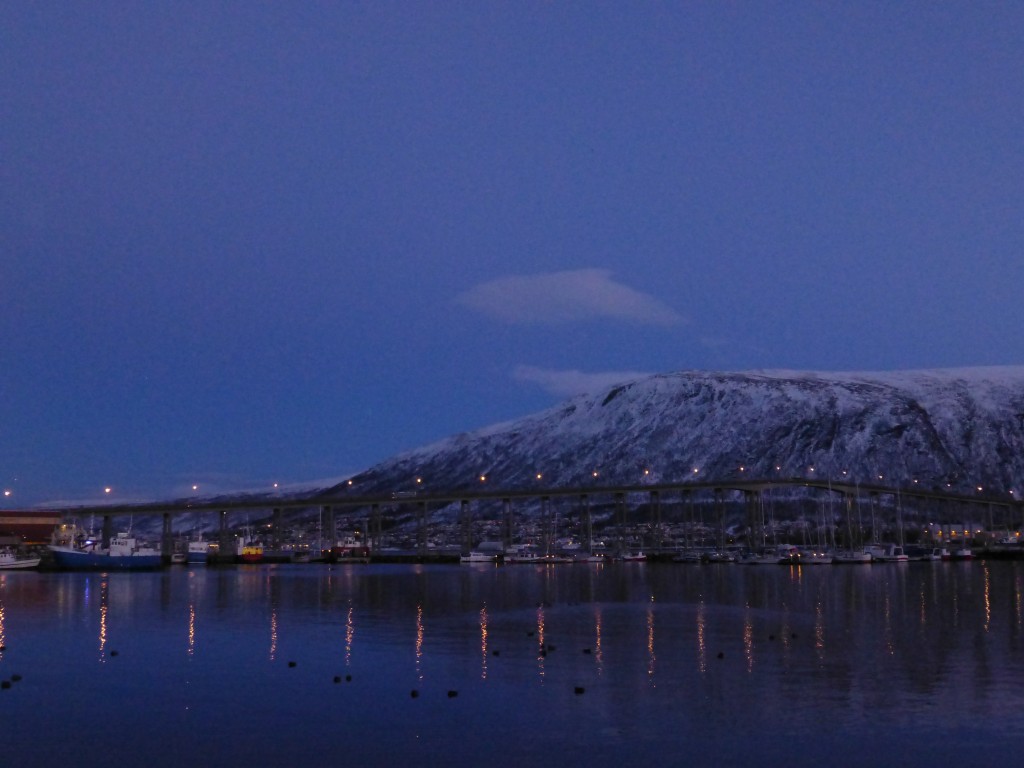
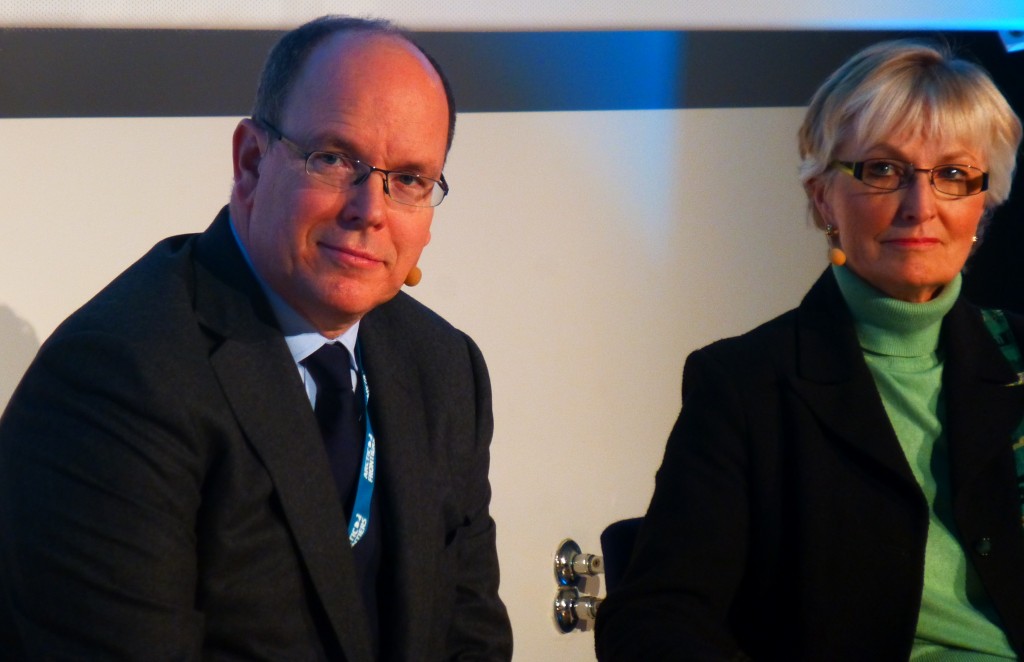
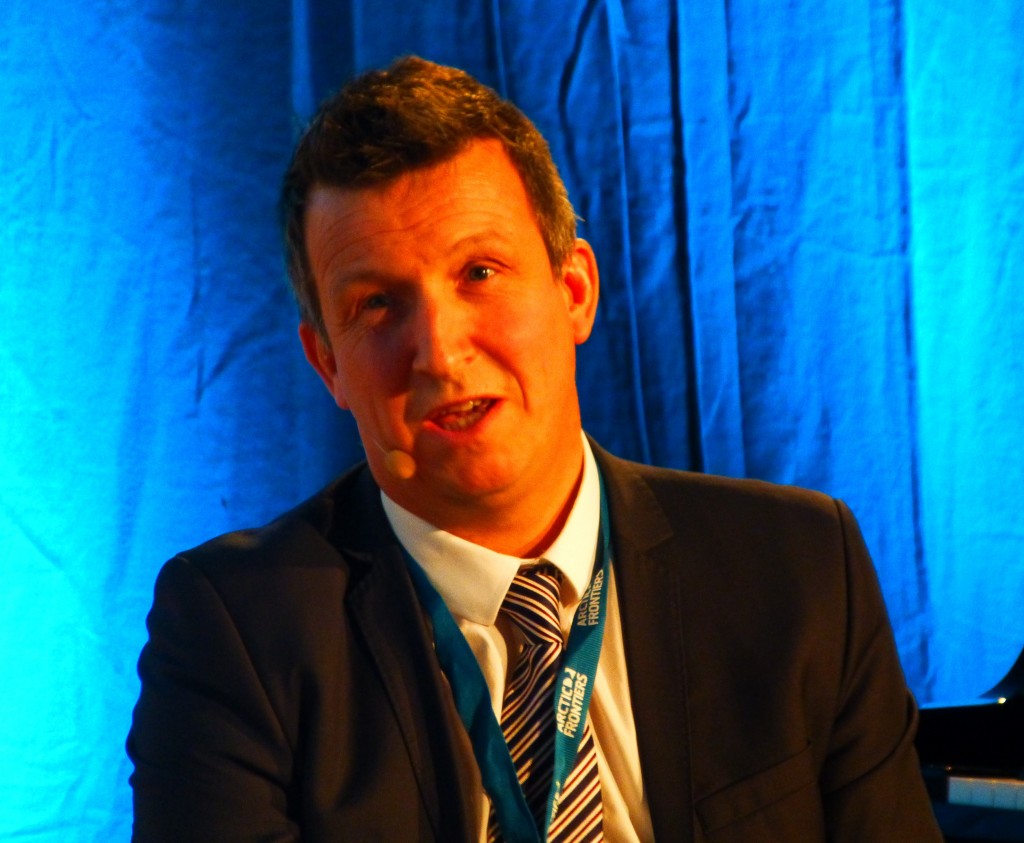


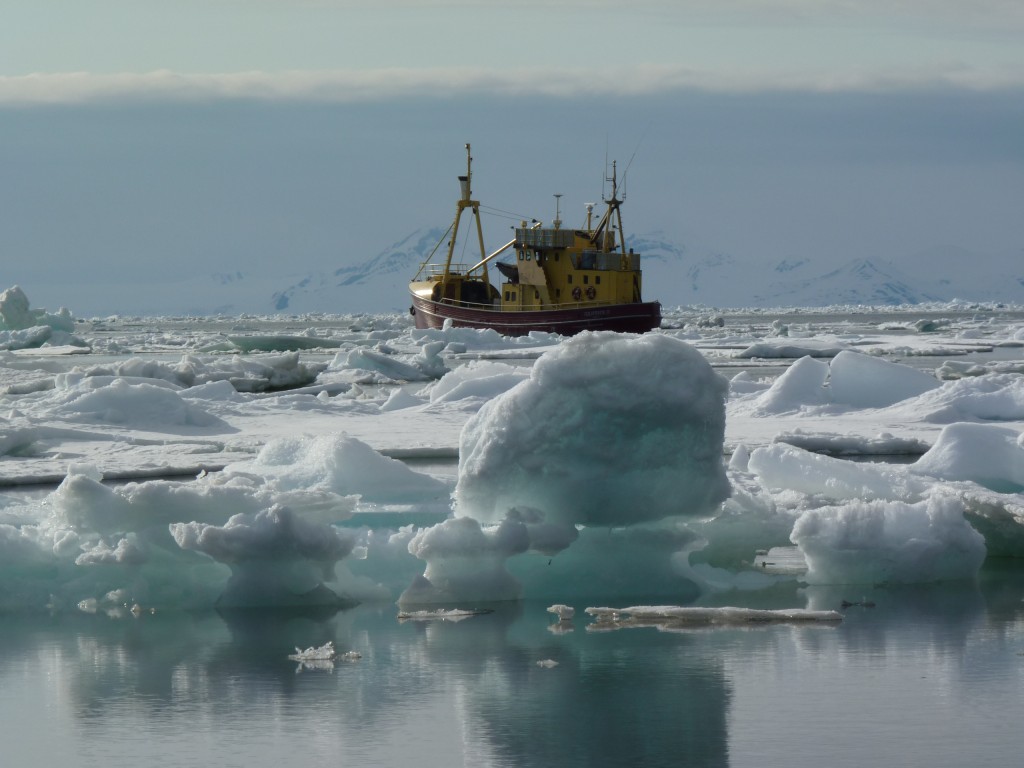
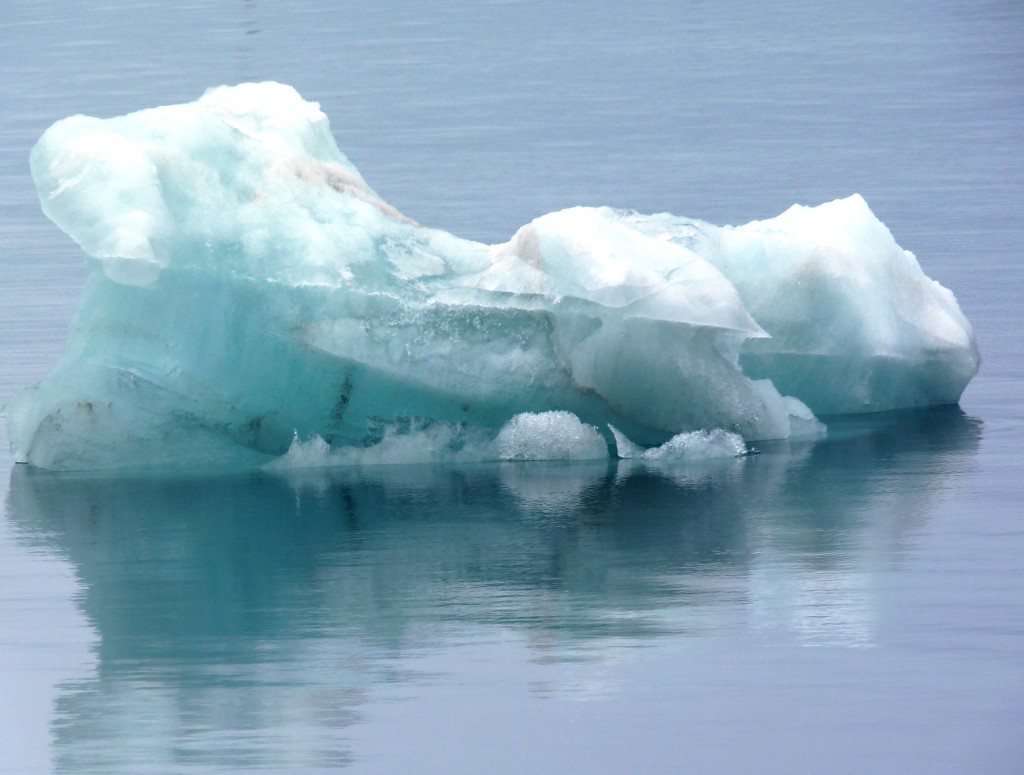
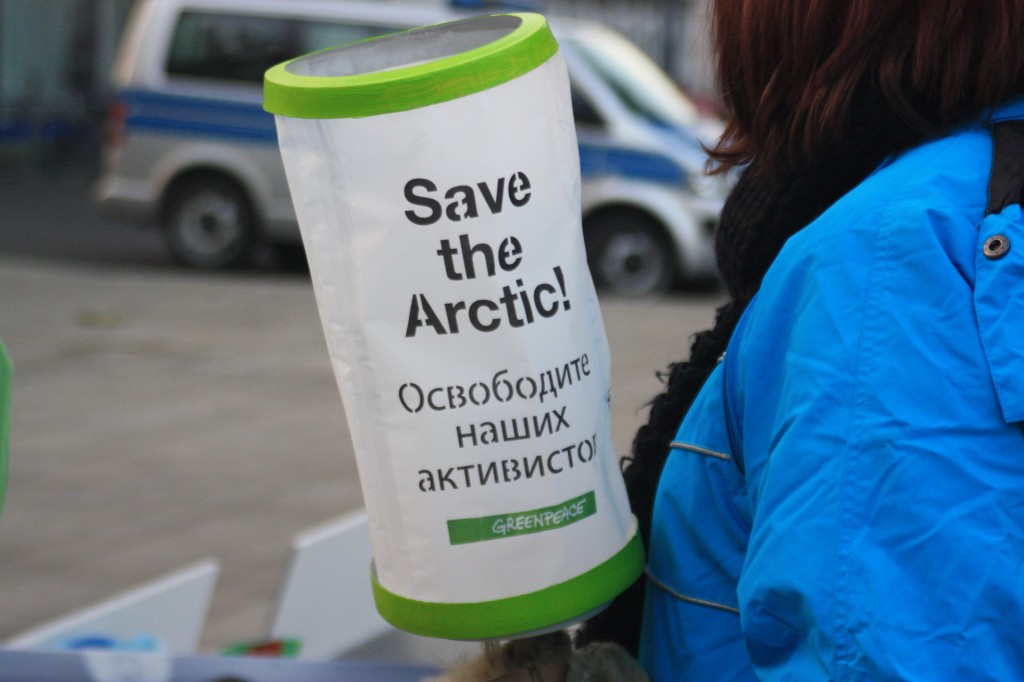

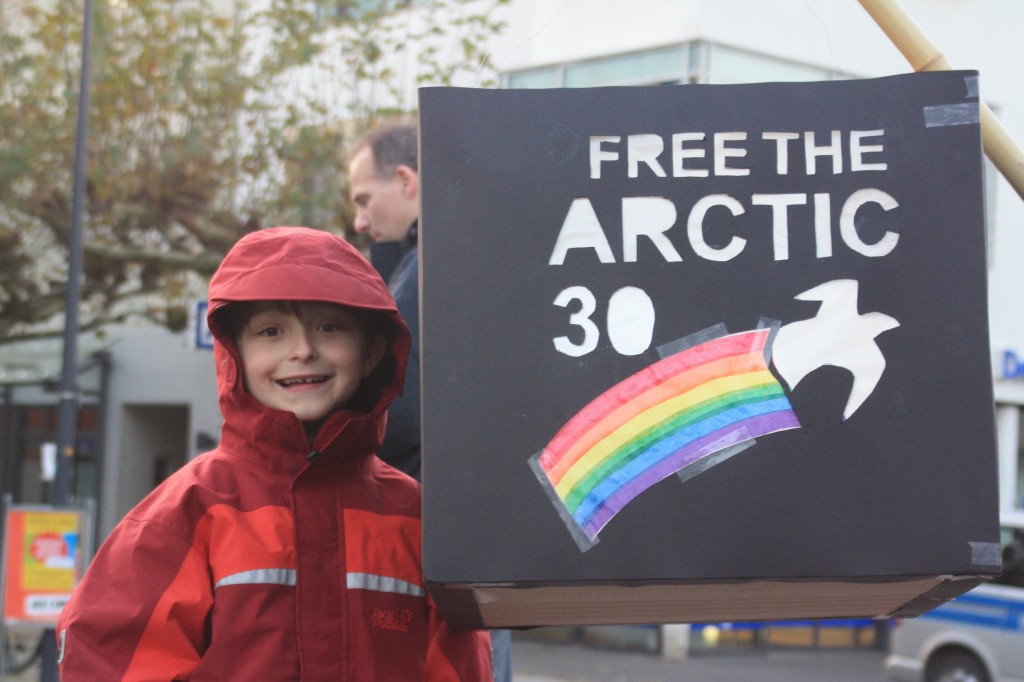
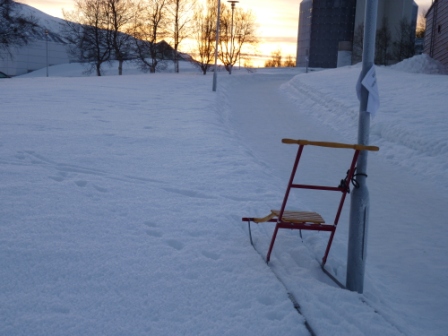
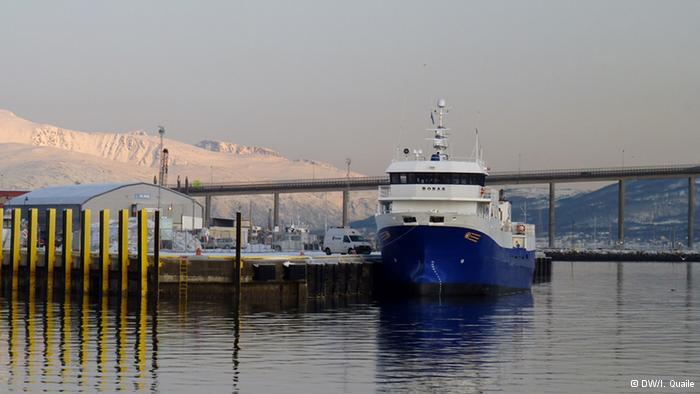
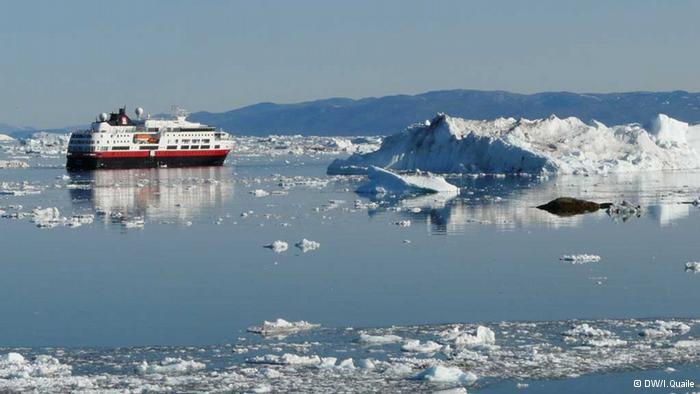
















Feedback